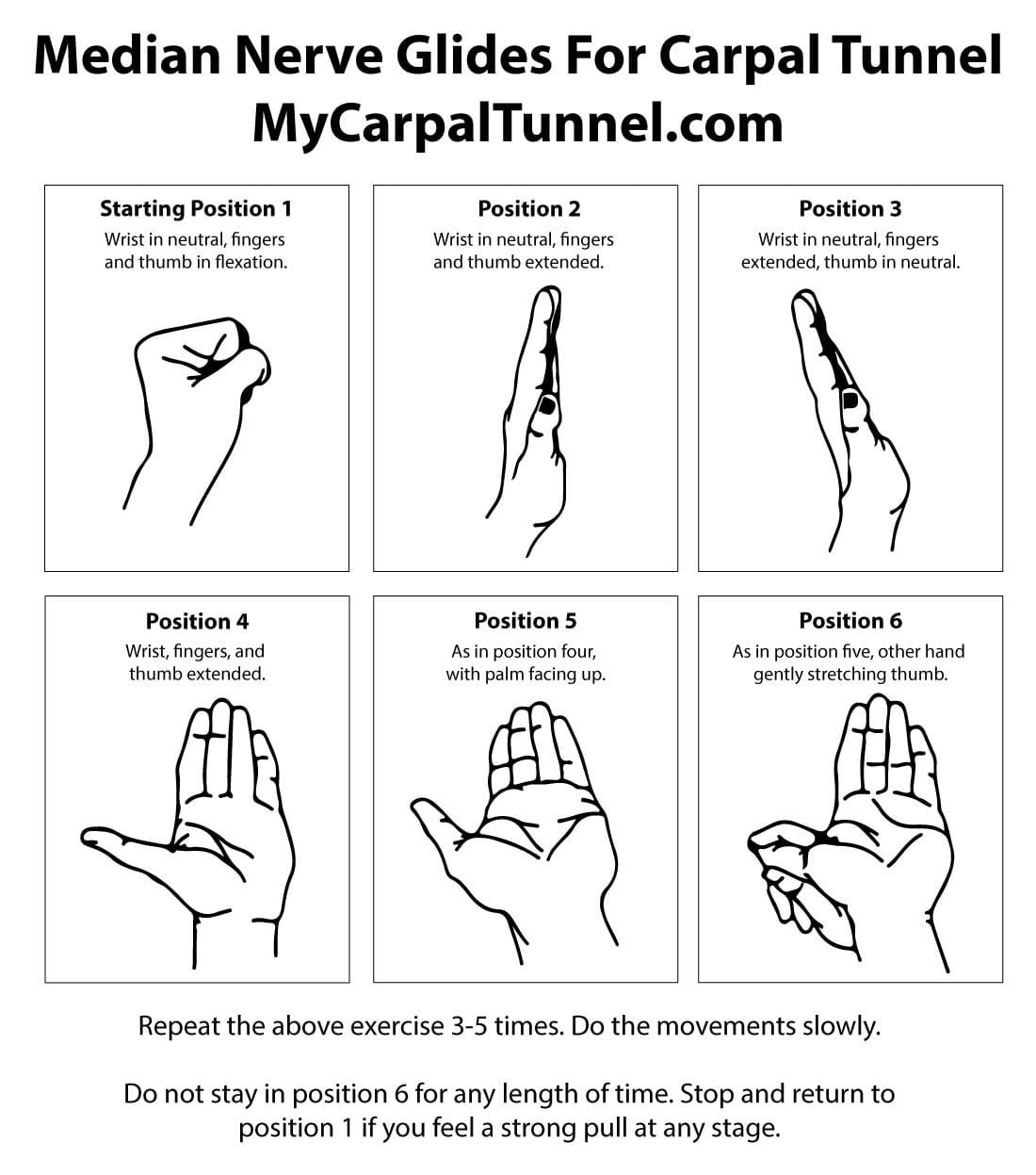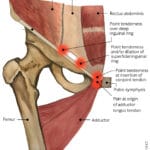Are you experiencing tingling, numbness, or pain in your hands and wrists? You might be experiencing carpal tunnel syndrome. This guide provides a comprehensive plan to ease discomfort, improve hand mobility, and potentially prevent carpal tunnel syndrome from worsening. Let’s explore how targeted exercises, combined with other strategies, can help you regain control of your hand health.
Understanding Carpal Tunnel Syndrome
Carpal tunnel syndrome occurs when the median nerve, which runs through a narrow passage in your wrist called the carpal tunnel (formed by carpal bones and the transverse carpal ligament), becomes compressed. This compression can lead to a range of symptoms, including numbness, tingling, pain, and weakness in the hand, often affecting the thumb, index, middle, and ring fingers. Symptoms frequently worsen at night. Several factors can contribute to carpal tunnel syndrome, such as repetitive hand movements, awkward wrist positions, underlying medical conditions like diabetes, arthritis, or hypothyroidism, pregnancy, and previous wrist injuries.
Effective Carpal Tunnel Exercises
Exercises are a cornerstone of carpal tunnel management. They aim to reduce pressure on the median nerve, improve flexibility and strength in the wrist and hand, and promote blood flow to the affected area. Regular practice can lead to pain relief, improved hand function, a wider range of motion, and may help prevent symptoms from worsening.
Stretching Exercises
These stretches enhance flexibility and reduce tightness:
- Wrist Flexor Stretch: Extend your arm forward, palm up. Gently bend your wrist down with your other hand, feeling a stretch on the inner forearm. Hold for 15-20 seconds.
- Wrist Extensor Stretch: Extend your arm forward, palm down. Gently bend your wrist down with your other hand, feeling a stretch on the outer forearm. Hold for 15-20 seconds.
- Finger Stretch: Spread your fingers wide and hold for a few seconds. Repeat several times.
- Thumb Stretch: Gently pull your thumb back and hold for a few seconds. Repeat several times.
- Prayer Stretch: Press palms together in front of your chest, fingers pointing up. Lower hands towards your waist, keeping palms together, until a stretch is felt in the wrists. Hold for 15-20 seconds.
Nerve Gliding Exercises
These exercises help the median nerve move more freely:
- Median Nerve Glide: Extend your arm forward, palm up. Bend your wrist up, then extend your fingers. Bend your wrist down, then flex your fingers. Repeat several times, ensuring smooth movements.
Strengthening Exercises
These exercises build strength (use a light resistance band or small weight):
- Wrist Curls (Palm Up & Down): Rest your forearm on a table, hand over the edge. Curl your wrist up and down, holding a light weight. Repeat 10-15 times for each palm position.
Exercise Frequency and Duration
Perform these exercises several times a day. Hold stretches for 15-20 seconds and repeat strengthening exercises 10-15 times. Consistency is key for optimal results.
Complementary Therapies and Medical Advice
While exercises are highly beneficial, other therapies can complement your routine:
- Splints: Wearing a splint, particularly at night, helps maintain a neutral wrist position and minimizes pressure on the median nerve.
- Medications: Over-the-counter pain relievers (NSAIDs) can manage pain and inflammation. Your doctor might prescribe corticosteroids for more significant swelling.
- Other Therapies: Yoga, massage therapy, and acupuncture may provide additional relief for some individuals. If you are looking for more detailed information about CDVs, click here. Or if you are interested in learning more about aspen hcrhs, click here.
It’s essential to consult a doctor if your symptoms are severe, persistent, or worsen. They can accurately diagnose the condition, rule out other potential causes, and recommend the most suitable treatment plan, which may include medications, splinting, or in some cases, surgery. Current research suggests that a combination of exercises, splinting, and other conservative treatments is often the most effective approach for managing carpal tunnel syndrome. However, ongoing studies continually explore new treatment options, so discussing the latest research with your healthcare provider is crucial for the best possible care. Remember, this information is for general knowledge and doesn’t replace professional medical advice. Always consult with a healthcare provider for personalized guidance and treatment tailored to your specific needs.
Can Carpal Tunnel Be Fixed with Exercise?
While exercise alone may not entirely “fix” carpal tunnel syndrome, it is a valuable tool for managing symptoms, especially when combined with other treatments. Exercise can create more space within the carpal tunnel, easing pressure on the median nerve. It also enhances wrist and hand flexibility and range of motion, facilitating everyday tasks.
Different types of exercises target specific aspects of carpal tunnel syndrome:
- Nerve gliding exercises: Mobilize the median nerve, promoting freer movement within the carpal tunnel.
- Wrist stretches: Maintain wrist flexibility and prevent stiffness, which can aggravate symptoms.
- Tendon glides: Focus on the tendons that control finger movement, ensuring smooth function.
- Strengthening exercises: Build wrist and hand muscles to provide better support and reduce strain on the median nerve.
Aim for several short exercise sessions (10-15 minutes) throughout the day. Consistency is more beneficial than infrequent, lengthy sessions. While generally safe, mild soreness initially is normal. Stop immediately if you experience sharp pain. Consult your doctor or physical therapist if symptoms worsen after starting exercises.
Current research suggests that exercise is a helpful component of a comprehensive carpal tunnel treatment plan. However, its effectiveness can vary based on individual factors and the severity of the condition. Some experts believe exercises are most effective when combined with splinting or ergonomic modifications. Ongoing research continues to explore the long-term benefits of exercise for carpal tunnel syndrome, so it’s always a good idea to discuss this with your healthcare provider.
NHS Exercises for Carpal Tunnel
The UK’s National Health Service (NHS) recommends specific exercises for managing carpal tunnel syndrome. These focus on stretching, nerve gliding, and gentle strengthening to relieve pressure on the median nerve and improve wrist mobility. Remember, consistency is vital, and consulting a doctor or physiotherapist is recommended if you experience increased pain or discomfort.
Stretches:
- Wrist flexor stretch: Extend your arm, palm up. Gently bend your wrist down with your other hand, holding for 15-20 seconds.
- Wrist extensor stretch: Extend your arm, palm down. Gently bend your wrist up with your other hand, holding for 15-20 seconds.
Nerve Glides:
- Median nerve glide: Extend your arm, palm up. Bend your wrist up and extend fingers. Then, bend your wrist down and make a fist. Repeat smoothly.
Strengthening:
- Wrist curls: Using a light weight or resistance band, rest your forearm on a table and curl your wrist up and down. Repeat 10-15 times.
- Thumb extension: Hold a light weight or resistance band and extend your thumb outwards. Hold for 5 seconds, and repeat 10-15 times.
Important Considerations:
- Perform exercises regularly throughout the day.
- Listen to your body and stop if you feel pain.
- Be patient, as results can take time.
- Seek professional guidance if symptoms persist or worsen. Your doctor or physiotherapist can offer tailored advice, rule out other issues, and recommend additional treatments like splints, medication, or surgery if necessary. Ongoing research may reveal new treatment options, so staying informed is beneficial.
Does Squeezing a Ball Help Carpal Tunnel?
While it might seem logical that squeezing a ball could strengthen the hand and wrist, offering relief from carpal tunnel, it doesn’t directly address the underlying nerve compression. In fact, excessive or improper squeezing could exacerbate symptoms by further irritating the median nerve or inflaming surrounding tissues.
Carpal tunnel relief requires targeted exercises that stretch, strengthen, and improve wrist flexibility:
- Wrist extensions and flexions: Strengthen the forearm muscles that control wrist movement.
- Nerve glides: Reduce pressure and improve median nerve mobility.
- Tendon glides: Prevent tendons from becoming stuck and contributing to symptoms.
Other treatments include wrist splints, medications to reduce pain and inflammation, and in severe cases, surgery to relieve pressure on the nerve.
Current research suggests exercise and splinting are primary defenses against carpal tunnel syndrome, with nerve and tendon glides being particularly beneficial. However, individual responses to treatment vary. It is crucial to consult a doctor or physical therapist for a proper diagnosis and personalized treatment plan. They can advise on appropriate exercises, including whether squeezing a ball is suitable for your specific situation. Effective carpal tunnel management addresses nerve compression and improves overall wrist and hand function.
















